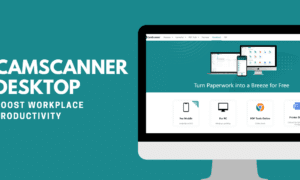Unplanned downtime is one of the most expensive challenges modern enterprises face. Every halted production line, every delayed delivery, every idle resource comes with a cost that compounds quickly. Traditional maintenance methods—waiting for a breakdown or sticking to a fixed schedule—simply don’t cut it anymore. They either leave businesses vulnerable to unexpected failures or force them to waste resources servicing equipment that doesn’t really need it yet.
That’s why organizations today are turning to predictive maintenance, a strategy that shifts maintenance from being a cost center into a business advantage. Some modern platforms like Intellicus help organizations anticipate issues before they happen. Predictive maintenance ensures assets are always available, operations stay resilient and decision-makers have the confidence to act quickly.
From Reactive Fixes to Predictive Insight
For decades, businesses treated equipment servicing as an afterthought—fix it when it breaks or schedule a routine check. Both approaches are riddled with inefficiencies. Reactive fixes create sudden, costly disruptions, while time-based checks often consume time, labor and materials unnecessarily.
Predictive maintenance marks a fundamental shift. Instead of reacting or guessing, organizations use advanced analytics to detect hidden patterns in their operational data. The result? Maintenance happens when it’s actually needed—not too late and not too soon. This precision not only reduces costs but also extends the life of assets, ensuring resources are used wisely.
The Core Pillars of Predictive Maintenance
The strength of predictive maintenance lies in how multiple capabilities come together into a single, powerful framework:
- Data integration from multiple sources
Modern enterprises generate data from sensors, machines, ERP systems and supply chains. Predictive maintenance combines these streams into a unified view so that no warning sign gets lost in silos. - Real-time monitoring and alerts
Delays in spotting issues can be as damaging as missing them entirely. Continuous monitoring ensures that decision-makers know the health of assets at any moment. When anomalies surface, real-time alerts act as an early-warning system—providing the time needed to intervene before disruptions escalate. - Anomaly detection and advanced analytics
Wear and tear often shows up as subtle deviations long before outright failure. Predictive analytics identifies these irregularities, even in vast data volumes and highlights them for proactive action. - Scalable dashboards for enterprise visibility
A predictive maintenance system is only as useful as the clarity of its insights. Dashboards bring together complex analytics into intuitive, visual views that are easy to interpret. As organizations grow, these dashboards scale seamlessly to accommodate more assets, more data and more decision-makers without sacrificing performance.
Each of these pillars is powerful on its own. Together, they transform maintenance from a back-office routine into a strategic capability.
Beyond Operations: Driving Enterprise Agility
Predictive maintenance doesn’t just prevent failures—it drives agility across the enterprise. When leaders can rely on accurate forecasts of asset health, they can:
- Allocate budgets with confidence, avoiding unnecessary spending.
- Streamline supply chains by aligning spare parts inventory with actual need.
- Support sustainability goals by reducing waste from premature replacements.
- Enhance workforce productivity by freeing teams from repetitive maintenance schedules and focusing them on higher-value tasks.
In this way, predictive maintenance acts as a multiplier—protecting operations while also strengthening financial strategy, customer commitments and long-term growth.
The Analytics Advantage
The real differentiator of predictive maintenance lies in the analytics layer. Technology enables organizations not only to collect vast amounts of data but also to make sense of it in ways that directly support action.
- Centralized dashboards ensure that the CFO, plant manager and operations head all work from the same, consistent truth.
- Prescriptive alerts move beyond “something is wrong” to “here’s what you should do next,” allowing faster and smarter responses.
- Seamless integration ensures that predictive insights don’t live in isolation but flow naturally into broader enterprise analytics, supporting decisions across functions.
- Scalability means the system grows with the business, ready to handle more assets, more data and more complexity without a drop in performance.
By weaving analytics into the core of maintenance, enterprises gain a strategic shield—protecting today’s operations and preparing for tomorrow’s challenges.
Conclusion: A New Standard for Resilience
Predictive maintenance is no longer an emerging practice—it’s fast becoming a standard for enterprises that want to stay resilient in a volatile market. What sets leaders apart is not just the ability to collect data, but the ability to act on it in real time, across the enterprise, with clarity and confidence.
By unifying data, monitoring continuously, detecting anomalies early and presenting insights through scalable dashboards, predictive maintenance transforms maintenance into a driver of strategy. The result is fewer disruptions, smarter resource use and an organization that can adapt quickly to whatever comes next.
In an era where every minute of downtime is a missed opportunity, predictive maintenance isn’t just about keeping machines running—it’s about keeping the entire enterprise moving forward.



































